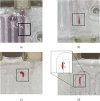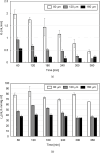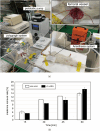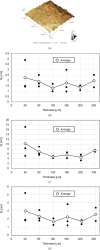Design of Polyether sulfone flat-sheet membranes for multi-layered hemodiafiltration devices
- PMID: 40540465
- PMCID: PMC12180728
- DOI: 10.1371/journal.pone.0324498
Design of Polyether sulfone flat-sheet membranes for multi-layered hemodiafiltration devices
Abstract
Multilayered hemodialysis devices enable blood flow without the need for an external pump, whereas hollow fiber-type devices require a pump due to significant pressure loss across the fibers. This highlights a key advantage of multilayered devices for implantable applications, where a simpler and lighter system reduces the burden on patients. This study investigates the mechanical strength and dialysis efficiency of polyether sulfone (PES) flat-sheet membranes for multilayered devices. PES membranes, with thicknesses ranging from 40 to 160 µm, were prepared using the liquid inversion method, with thickness controlled via spin coating. The mechanical strength of the membranes was tested following the ISO 8637-1:2017 protocol, and membranes thicker than 80 µm were experimentally verified to withstand pressures of up to 500 mmHg, making them suitable for dialysis applications. Furthermore, the study demonstrates the successful use of 80 µm membranes in both in vitro and ex vivo experiments with rats, identifying this thickness as optimal for multilayered dialysis devices.
Copyright: © 2025 Kono et al. This is an open access article distributed under the terms of the Creative Commons Attribution License, which permits unrestricted use, distribution, and reproduction in any medium, provided the original author and source are credited.
Conflict of interest statement
No authors have competing interests.
Figures










Similar articles
-
Comparison of cellulose, modified cellulose and synthetic membranes in the haemodialysis of patients with end-stage renal disease.Cochrane Database Syst Rev. 2001;(3):CD003234. doi: 10.1002/14651858.CD003234. Cochrane Database Syst Rev. 2001. Update in: Cochrane Database Syst Rev. 2005 Jul 20;(3):CD003234. doi: 10.1002/14651858.CD003234.pub2. PMID: 11687058 Updated.
-
Fouling process of hemodiafiltration membranes by hemodialysis and hemodiafiltration therapy.J Artif Organs. 2025 Sep;28(3):408-414. doi: 10.1007/s10047-025-01497-9. Epub 2025 Feb 27. J Artif Organs. 2025. PMID: 40016601 Free PMC article.
-
[Does continuous veno-venous hemodiafiltration therapy reduce mortality due to acute renal failure as compared to intermittent hemodialysis?].Nefrologia. 2007;27 Suppl 1:42-8. Nefrologia. 2007. PMID: 17763635 Spanish.
-
Electronic cigarettes for smoking cessation.Cochrane Database Syst Rev. 2022 Nov 17;11(11):CD010216. doi: 10.1002/14651858.CD010216.pub7. Cochrane Database Syst Rev. 2022. Update in: Cochrane Database Syst Rev. 2024 Jan 8;1:CD010216. doi: 10.1002/14651858.CD010216.pub8. PMID: 36384212 Free PMC article. Updated.
-
Electronic cigarettes for smoking cessation.Cochrane Database Syst Rev. 2021 Sep 14;9(9):CD010216. doi: 10.1002/14651858.CD010216.pub6. Cochrane Database Syst Rev. 2021. Update in: Cochrane Database Syst Rev. 2022 Nov 17;11:CD010216. doi: 10.1002/14651858.CD010216.pub7. PMID: 34519354 Free PMC article. Updated.
References
-
- Sakai K. Technical determination of optimal dimensions of hollow fiber membranes for clinical dialysis. Nephrol Dial Transpl. 1989;4:73–7.
-
- Luo J, Wu C, Xu T, Wu Y. Diffusion dialysis-concept, principle and applications. Journal of Membrane Science. 2011;366(1–2):1–16. doi: 10.1016/j.memsci.2010.10.028 - DOI
MeSH terms
Substances
LinkOut - more resources
Full Text Sources

